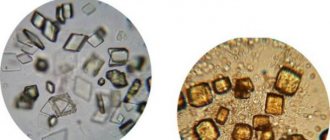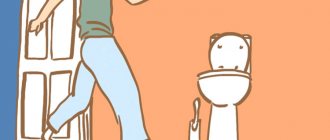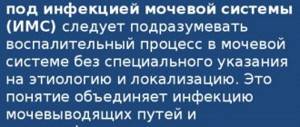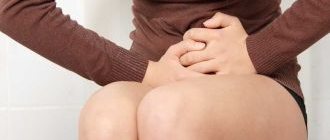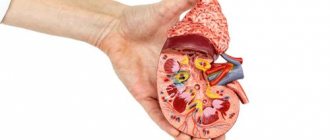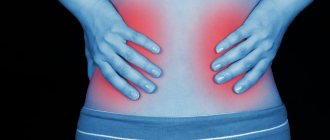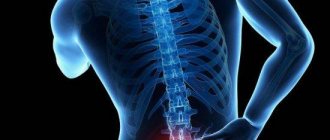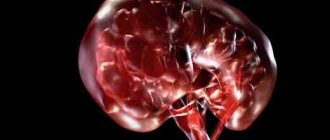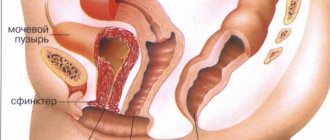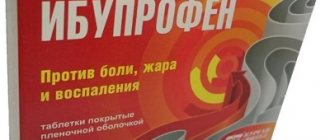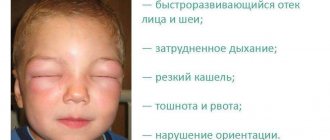Description of the pathology
Urinary salt diathesis is a disease in which the body has an increased content of calcium salts of uric acid, most often urates and oxalates. Otherwise, this pathology is called uricuria. There are two ways this disorder can develop:
- Salts are formed in increased quantities due to metabolic disorders. Such metabolic disorders can be congenital or acquired. As a result, excess salts settle in the kidneys and are then excreted in the urine.
- Calcium salts are formed in excessive quantities due to poor nutrition. Their appearance is promoted by foods high in organic acids. If a person abuses meat and fish food, this can cause an increased concentration of urates. If the diet is dominated by vegetable dishes, then the level of oxalates in the urine increases.
The development of pathology is promoted by dehydration. With a lack of fluid, salts are not washed out of the body. A urine test reveals a reddish sandy sediment. With urinary diathesis, echogenic inclusions are detected in the kidneys. They are determined during an ultrasound examination.
Uricuria is considered a borderline state between normal and pathological. Over time, the patient's urine density and acidity increases, which contributes to the crystallization of sand. The risk of urolithiasis increases, which manifests itself in severe attacks of renal colic.
Salt diathesis: causes, treatment and ways to prevent the disease
One of the most important functions assigned to the kidneys is the removal of excess fluid.
Not all people comply with the permissible daily intake of water and drink only when absolutely necessary. There is an increase in salt deposition in the kidneys.
For this reason, salt diathesis occurs, what kind of disease is it and what danger does it pose to the human body?
General information and code for ICD-10
This is a disease in which there is an accumulation of oxalate, urate and phosphate residues in the kidneys.
According to the International Classification of Diseases, 10th edition, salt diathesis has the number E79 and belongs to the group of metabolic disorders of purine and pyrimidine compounds.
Throughout a person’s life, a huge amount of oxalates, phosphates and other compounds are excreted through the renal pelvis. When both kidneys function normally, they are excreted in urine.
If an inflammatory process develops, then this process becomes more complicated, fluid, toxins and salt deposits accumulate in the body.
As a rule, this disease is a consequence of chronic inflammation in the kidneys; it never appears on its own. If all urological diseases are treated in time, salt diathesis can be avoided.
During an exacerbation, the patient develops cystitis, prostatitis or urethritis. In order to determine the presence of salt diathesis in the body, it is necessary to regularly take a general urine test.
Causes of the disease
The main factor that provokes the development of this disease is a genetic predisposition to the accumulation of oxalates and other compounds. Other reasons include:
- Pregnancy , during which there is a heavy load on the kidneys, especially in the first trimester.
- Drink highly purified water . It does not contain not only harmful, but also beneficial impurities. Its regular use leads to disruption of the metabolic process in the body and the production of enzymes.
- Insufficient fluid volume , especially in the summer. Normally, a person should drink up to 2 liters of fluid per day. If this does not happen, then the urine becomes too dense and a large amount of salts accumulates in it.
- Improper nutrition leads to severe stress on the kidneys, thus deteriorating their basic properties.
The process of sand accumulation in the kidneys is long-term. In this case, severe irritation of the mucous membranes in the bladder occurs with accumulated salts from urine, as a result of which inflammatory processes develop. Therefore, it is very important to identify and begin treatment in the early stages.
Statistical data
It occurs in children of any age (infants are characterized by congenital kidney pathology), as well as in men and women after 40 years of age (this is due to age-related changes in the organ).
Types and classification
Depending on the predominance of certain residues in the urine, the following types of salt diathesis are distinguished:
- oxalate – when the norm of oxalic acid is exceeded;
- urate – a large amount of uric acid salts;
- phosphate – excess of the norm of decomposition products of phosphate acid;
- carbonate – increased amount of carbonates and carbonic acid.
As a rule, this disease is mixed in nature, that is, several types of deposits are present in the urine.
Malaise in a child
May be congenital or acquired. In the first case, the child develops genetic kidney diseases, which are accompanied by increased deposition of salts in the urine.
If salt diathesis did not appear immediately after birth, then we can talk about renal failure in the child.
Manifestation of symptoms
This disease has no characteristic symptoms. The person has no pain, discomfort or any other signs.
However, as the accumulation of salts progresses, pain appears in the lumbar region, discomfort when urinating, and body temperature rises.
With a strong accumulation of stones, the walls in the kidneys are injured, so traces of blood appear in the urine.
The most characteristic symptom of salt diathesis is frequent and false urge to go to the toilet. Therefore, it is recommended not to hesitate to consult a doctor in order to prevent complications.
Stages of flow
Depending on which salts predominate in the urine, the following symptoms are characteristic of salt diathesis:
- with a high oxalate content, the acidity of urine is in the range from 5 to 6;
- when urates are exceeded, the urine turns dark and the acidity becomes less than 5;
- with a high phosphate level, the acidity level is above 7, urine has a light color, an unpleasant odor and slight turbidity.
Diagnostic measures
In order to identify salt diathesis, you must first pass a general urine test. The doctor will also order you to undergo the following types of tests:
- blood test for general and biochemical parameters;
- Ultrasound examination of the abdominal organs. They help identify the possible presence of sand or kidney stones or other urological problems;
- X-ray of the kidneys, which helps to establish the exact location and size of salt formations in the organ. The disadvantage of this method is its high selectivity; it cannot detect urate diathesis or salt deposits less than 3 mm.
Therapy methods
After receiving the results of a comprehensive examination and diagnosis, the doctor begins to prescribe a treatment regimen; this is done by an endocrinologist and urologist.
Traditional medicine
In addition to prescribing medications, the doctor will definitely help you choose a diet that will relieve the patient of salt diathesis. The following medications are used:
Most often, Phytolysin or Fitolit are used in the treatment of salt diathesis. They have anti-inflammatory and diuretic effects. They contain only natural ingredients, therefore they are allowed for use by pregnant and lactating mothers.
The dosage and duration of use for adults and children is selected by the doctor individually depending on the stage of the disease. If your body temperature rises, you can take antipyretic medications.
Treatment at different stages
Treatment of salt diathesis at the first stage is not carried out due to the absence of symptoms. As the disease progresses, doctors prescribe anti-inflammatory, diuretic drugs, local antispasmodics and vitamin complexes to strengthen the immune system.
If treatment is not carried out before the disease worsens, the patient will suffer from kidney failure or urolithiasis. In this case, the patient undergoes a surgical operation, which includes removing the resulting salt deposits.
However, this operation does not guarantee that a person will not form kidney stones or sand again after some time.
It is imperative to monitor the amount of fluid you consume; you should avoid taking any carbonated drinks; you should give preference to plain water.
Folk remedies
The use of traditional medicine methods helps relieve the main symptoms of salt diathesis, but does not treat the root cause of its formation.
Therefore, it is better to carry out these manipulations after consultation with a doctor and in parallel with taking medications.
To treat this disease, infusions and decoctions of medicinal plants are used, for example, knotweed, parsley and celery root, grape leaves, etc. Let's look at the most popular recipes:
- Decoction of grape leaves . To do this, take 5-6 grape leaves per glass of water, bring to a boil and let stand for 30 minutes. Strain and consume 1 tbsp. 3 times a day after meals.
- dried blackcurrants , transfer to a thermos and leave for 2-3 hours. Strain the resulting infusion and drink 2-3 times a day, regardless of meals.
- Black radish juice , which is used in the treatment of salt diathesis in adults. It is best to drink it fresh, 1 tbsp. spoon 3 times a day without reference to food.
Complications
With improper and untimely treatment, accumulated salt deposits can increase significantly in size and lead to urolithiasis or kidney failure. In this case, the patient is indicated for surgical intervention.
Disease Prevention
To prevent salt diathesis it is necessary:
- regularly take a general urine test and monitor changes in its appearance;
- drink the required amount of liquid during the day, and in no case should you torture yourself with thirst or, on the contrary, drink too much water;
- adhere to proper nutrition and a healthy lifestyle;
- do not drink alcoholic beverages;
- carefully monitor body weight, since people prone to obesity are more likely to suffer from urological diseases;
- do not cause inflammatory and infectious diseases of the urinary system.
Diet food
Proper nutrition plays a very important role in the prevention and treatment of this disease. It is necessary to exclude the intake of any fried, salty and spicy foods. Basic diet requirements:
- exclude all fried, spicy, salty foods;
- stop drinking alcohol and smoking;
- meals for the diet should be boiled or steamed;
- limit all dairy and fermented milk products;
- The only vegetables allowed are pumpkin and green peas.
A prerequisite is to drink 1.5-2 liters of liquid per day, preferably plain water or herbal tea.
Another requirement is to reduce the consumption of salt (up to 1.5 g per day), baked goods and meat. It is necessary to lead an active lifestyle and exercise regularly.
Results and conclusion
So, salt diathesis is a condition in which urine accumulates in the renal pelvis. It occurs equally in men, women and children. This disease is not independent, but occurs due to the presence of a pathological process in the kidneys or other organs of the urinary system.
Its insidiousness lies in the fact that in the early stages there are no characteristic symptoms and salt diathesis is diagnosed even with stones of impressive size. As a rule, drug therapy is carried out; in some cases, surgery is indicated for the patient.
For timely detection of diathesis, it is recommended to regularly take a general urine test and undergo an ultrasound examination of the abdominal and pelvic organs.
For prevention, you should pay close attention to your diet and lifestyle.
We recommend other articles on the topic
Source: https://UroHelp.guru/pochki/oslozhneniya/solevoj-diatez.html
Etiology
Let's consider the main causes of urinary salt diathesis. Treatment of this disease largely depends on its etiology. It is necessary to eliminate the factor that causes increased salt formation.
The following reasons can trigger the development of diathesis:
- genetic predisposition to water-salt balance disorders;
- abuse of meat, canned fish, salty, fatty and spicy foods;
- chronic pathologies of excretory organs;
- kidney injuries and bruises;
- low fluid intake (less than 1.5 liters per day);
- avitaminosis;
- weakened immune system;
- starvation;
- frequent poisoning with diarrhea and vomiting;
- uncontrolled use of antibiotics;
- systematic physical overexertion.
Symptoms of urinary diathesis in women often appear during pregnancy. During this period, the body is exposed to increased stress. Also, uricuria often occurs during menopause due to hormonal changes.
What is allergic diathesis
Allergic reactions can occur for various reasons:
- Immature gastrointestinal tract of a newborn baby;
- Weak immunity;
- Liver dysfunction.
The appearance and development of diathesis directly depends on the characteristics of the body.
There are cases when this disease manifests itself for a long time and then disappears. Therefore, it is very important to immediately identify the causes using medical diagnostics and eliminate them.
Symptoms
Symptoms and treatment of urinary diathesis depend on the stage of the pathology. At an early stage, uricemia usually does not cause discomfort to a person. The patient does not even assume that he has disturbances in the functioning of the excretory system. Diathesis is often detected accidentally during a clinical urine test.
Pathology makes itself felt only when a large amount of salt accumulates in the kidneys. Precursors of the acute stage of the disease appear: nausea, diarrhea, irritability, loss of appetite. Then the first symptoms of urinary diathesis appear:
- pain in the lumbar region and lower abdomen;
- frequent urination, accompanied by a burning sensation;
- reduction in the amount of urine excreted;
- the appearance of bloody impurities in the urine;
- fever.
Very often, patients mistake these manifestations for signs of cystitis or urethritis. It is possible to differentiate uricuria from inflammatory pathologies of the excretory organs only with the help of laboratory tests.
If there is no treatment at this stage, then crystallization of salt deposits occurs. Patients experience new symptoms of urinary diathesis:
- swelling of the face and lower extremities;
- increased blood pressure;
- headache;
- irritability and frequent mood swings;
- thirst;
- nausea;
- the appearance of acetone odor from the mouth.
Such manifestations indicate severe intoxication of the body and a disorder in the metabolism of salts and water.
Symptoms and treatment of urinary diathesis in women and men are the same. However, patients may mistake the initial manifestations of uricuria for signs of gynecological pathology. After all, inflammatory diseases of the female genital organs are also accompanied by pain in the lower abdomen and lower back. Only a specialist can carry out differential diagnosis, so a visit to the doctor should not be postponed.
Features of pathology in children
Uricuria in young children is often congenital. It is associated with genetic abnormalities in the structure of the kidneys. This disease is also often observed during puberty. The cause of pathology in adolescents is most often poor nutrition with excess protein in the diet.
Symptoms and treatment of urinary diathesis in a child are the same as in adult patients. However, in childhood, signs of kidney damage are often combined with neuropsychiatric manifestations:
- capriciousness;
- fatigue;
- deterioration of memory and thinking abilities;
- absent-mindedness;
- headaches.
Sick children are developmentally delayed and have difficulty studying. The child experiences sudden and causeless weight loss.
Many adults believe that diathesis is always accompanied by a rash and itching. However, this is a misconception. The term “diathesis” refers to a fairly large group of pathologies. Skin rashes are characteristic of the allergic and hemorrhagic form of the disease. Uricuria is not accompanied by a rash. This disease cannot be determined by skin manifestations.
Symptoms of exudative diathesis
The first symptoms may appear after milk proteins are ingested. Citrus fruits, strawberries, oatmeal and even eggs have similar properties. The main symptom of exudative diathesis is the appearance of redness on the skin. In affected areas, the skin becomes dry and flaky. Symptoms improve with cold. It is enough to go outside and the main signs will disappear on their own. However, upon returning to home, they will pester the child with the same force.
In people suffering from diathesis, unpleasant symptoms begin to manifest themselves from an early age. Babies constantly suffer from diaper rash; on the scalp there is a milky crust or scales, inside of which there is a secretion of the sebaceous glands. Various rashes may appear, accompanied by severe itching.
Children susceptible to diathesis are more likely to suffer from rhinitis, ARVI and conjunctivitis. And everything happens in a protracted manner. The development of false croup and problems with stool are possible. When the baby turns 2 years old, symptoms will begin to manifest themselves, less pronounced. However, in some cases, a smooth flow of diathesis into allergic rhinitis or bronchial asthma is recorded.
First signs
The symptoms of exudative diathesis are characterized by their diversity. The lesion can cover the skin and mucous membranes. The first signs appear immediately after birth. The disease progresses in waves. In this case, lethargy in children, excess weight, and pale skin are noted. Sometimes, on the contrary, babies are too thin, restless, and their skin is easily injured. There are problems with stool, and body temperature may rise for no reason.
The first symptoms are rashes on the skin. This may be seborrhea, characterized by formation in the area of the fontanel, crown and eyebrows. Milk scab cannot be ruled out. This condition is characterized by redness of the cheeks in the form of a blush. White scales are visible on top of it. The skin is rough.
Strophulus. A rash may appear on the skin, visually resembling small nodules. It is accompanied by severe itching.
Children's eczema. Scratching the rash can cause infection in the wounds. As a result, weeping wounds and pustules appear. Less commonly, this condition is characterized by excessive dryness and excessive flaking.
Exudative-catarrhal diathesis
This is a peculiar condition of the body, which is characterized by the appearance of infiltrative-desquamative processes on the skin and mucous membranes. This type of disease is called exudative-catarrhal diathesis. It occurs mainly in children. The disease is diagnosed in 60% of cases. Most often, the symptoms disappear on their own; by 2-3 years no manifestations of the disease are recorded. However, in 20% of cases there is a risk of diathesis developing into allergic diseases.
The first months of a baby's life may be accompanied by constant rashes. Moreover, they have different character and severity. Mainly seborrheic crusts appear on the head, diaper rash in the buttocks and milk scabs. At older ages, various types of rashes are recorded. Children with diathesis are characterized by excess body weight. Moreover, lack of weight can suddenly be replaced by its excess. Lymph nodes are enlarged, stools are frequent or unstable. The child is susceptible to acute respiratory diseases, rhinitis, otitis and bronchitis.
The course of the disease is varied. Most often it is wavy. The calm gives way to focal rashes. Certain allergens, in particular vaccination, food and neuropsychic stress, can affect this.
Possible consequences
Urinary salt diathesis is a rather dangerous pathology. Without treatment, this disease can lead to the following complications:
- Gout. The disease is accompanied by the accumulation of uric acid salts in the tissues. These compounds have a negative effect on the musculoskeletal system. A person experiences severe joint pain. This complication develops in 10% of patients.
- Urolithiasis. Over time, salt deposits in the kidneys undergo crystallization, and stones form in the excretory organs. When a stone passes through the ureter, an attack of renal colic occurs. The patient develops unbearable lower back pain that is not relieved by taking conventional analgesics. This condition requires immediate hospitalization and sometimes surgery.
Difficulties of recovery
When prescribing the removal of excess uric acid and salts, there is a danger of excessive diuresis. If the salts are already forming into stones, they may displace and pass into the ureter with its blockage.
If uric acid diathesis has led to urolithiasis, surgical methods to combat stones in the urinary tract may be required.
Patients should remember that if the diet is not followed, the tendency to form salts and form them into stones persists. Stones form again.
Diagnostics
Urinary salt diathesis is very difficult to identify at an early stage. Patients very rarely consult a doctor in the early stages, since the disease occurs without severe symptoms.
Diagnosis of this pathology is carried out by a urologist or nephrologist. It is very important to distinguish diathesis from inflammatory diseases of the urinary organs. Patients are prescribed the following examinations:
- clinical urine analysis;
- samples according to Zimnitsky and Nechiporenko;
- blood test for biochemical parameters and pH;
- urine test for bacteria;
- Ultrasound of the kidneys;
- urography with contrast agent.
Diagnostic measures
If uric acid diathesis is suspected, the following studies are prescribed:
- blood tests - biochemical and acidity (Ph);
- urine tests - general and daily.
Ultrasound of the kidneys and urinary organs is used as hardware research to determine urate stones and sand.
In addition, studies of other organs (lungs, heart, blood vessels) may be prescribed to identify changes in the acid-base balance.
In this case, additional blood tests may be prescribed - for acid-base status, arterial blood gases, and others.
Therapy
Treatment of urinary diathesis is aimed at reducing the concentration of uric acid in the body. First of all, medications are prescribed that reduce the production of this compound. These include:
- "Allopurinol."
- "Soluran."
- "Urocyte".
- "Blemaren."
Patients are also shown medications that help remove salts from the body:
You can find many positive patient reviews about Nephrodes drops. This is a harmless herbal medicine. It has anti-inflammatory and diuretic effects. The herbal medicine quickly removes salts from the body and prevents complications.
Excessive amounts of uric acid have toxic effects on the body. Therefore, patients are recommended to take Enterosgel sorbent. In order to normalize metabolic processes, multivitamin complexes are prescribed.
If a patient has kidney stones during diagnosis, then drugs that help remove stones are indicated:
- "Phytolysin".
- "Cyston".
These medications can only be taken for small stones. If large stones are found in the patient, then taking such drugs is strictly contraindicated. Otherwise, the patient will experience a severe attack of renal colic. Large stones can only be removed surgically.
If a patient develops gout, then taking the drug Colchicine is indicated. This is a herbal medicine that effectively relieves joint pain.
Principles of nutrition
Effective therapy is impossible without following a diet. After all, salts are formed in increased quantities when there is an excess of proteins in the diet and low fluid intake. It is necessary to strictly adhere to the rules of therapeutic nutrition.
The following products should be completely excluded from the menu:
- fatty meats;
- fatty fish;
- soups with meat broth;
- sausages, frankfurters and small sausages;
- smoked meats;
- chocolate;
- pickles and marinades;
- strong tea;
- cocoa;
- coffee.
Limiting protein in the diet does not mean that the patient needs to completely give up meat and fish. A vegetarian diet is not suitable for every person, and this type of diet is completely contraindicated for children. After all, a growing body requires proteins. Therefore, it is allowed to consume low-fat varieties of meat and fish, boiled or baked.
Meat and fish dishes can be eaten only in small quantities. The basis of the diet should be dairy and vegetable products:
- potatoes (especially sweet varieties);
- pumpkin;
- carrot;
- cauliflower;
- fresh fruits and dried fruits;
- salads from fresh and pickled vegetables;
- soups with vegetable broth;
- all types of cereals and pasta;
- milk;
- sour cream;
- fermented baked milk;
- cream;
- kefir;
- sauces made from milk, sour cream or vegetables;
- White bread;
- cookie.
It is very important to drink at least 2.5 liters of liquid per day. This helps flush salts from the body and reduce the density of urine. It is recommended to drink berry fruit drinks, freshly squeezed juices, and dried fruit compotes. Alcoholic drinks are strictly prohibited, as alcohol contributes to dehydration.
ethnoscience
Folk remedies can be used as an additional method of treatment. Only a doctor can select the most suitable medicinal plants. Patients are advised to take decoctions and infusions of herbs with diuretic and anti-inflammatory effects. It is important to remember that herbal diuretics are strictly contraindicated in the presence of stones.
You can use the following traditional medicine recipes:
- Dill seeds. You need to take 1 tablespoon of plant material, pour a glass of boiling water and leave for 1 hour. The composition is consumed 1 tablespoon three times a day.
- Bearberry (bear ears). A tablespoon of plant leaves is poured into a glass of warm boiled water. The composition is heated for 25 minutes in a steam bath, then cooled and filtered. The decoction is consumed 150 ml after each meal.
- Lingonberry leaves. 20 g of dried raw materials are poured with a glass of boiling water. The composition is infused for 30 minutes and taken a tablespoon three times a day.
Uricuria can provoke the development of inflammatory processes in the excretory organs. For such complications, taking kidney teas is indicated. Ready-made collections of medicinal herbs can be purchased at pharmacy chains.
Patients leave positive reviews about the treatment of uricuria with medicinal herbs. The use of teas and decoctions based on lingonberry leaves and dill seeds helps to quickly remove salts from the body. The effectiveness of herbal medicine was confirmed by the results of laboratory tests. At the same time, reports emphasize that treatment with herbal remedies must necessarily be combined with taking medications and following a diet.
Forecast
With timely diagnosis and treatment, the prognosis of the disease is favorable. However, even after complete removal of salts, the patient remains prone to uricuria. Kidney deposits may reappear. Therefore, such patients need to visit a urologist at least once a year.
If the pathology is complicated by urolithiasis, then conservative therapy is not always effective. In many cases, surgical removal of the stones is necessary. The prognosis is significantly worse if the patient develops chronic renal failure.
Treatment
The therapeutic tactics of diathesis are symptomatic. Glucocorticosteroids may be prescribed. In case of vitamin deficiencies, it is necessary to take special medications to replenish the missing vitamin. In case of heavy bleeding, a decision is made to remove the spleen. Blood and plasma transfusions may be performed. In case of low hemoglobin, you need to take iron supplements.
Prevention of hemorrhagic diathesis involves general methods of supportive treatment: physical education, water procedures, herbal medicine, etc.
Many people know what hemorrhagic diathesis is from their own experience. Many people live full lives with this diagnosis, because with timely treatment, the outcome of the pathology is favorable. The prognosis is aggravated in the case of a malignant course and the presence of complications.
Prevention
How to prevent the occurrence of uricuria? Nephrologists advise adhering to the following recommendations:
- drink enough liquid per day (at least 2 liters);
- do not abuse fatty meat, fish and smoked meats;
- enrich your diet with vitamin dishes;
- avoid fasting and overly strict diets for weight loss;
- timely cure pathologies of the excretory organs;
- regularly take a clinical urine test;
- if there is a hereditary tendency to form salts, visit a urologist at least once a year.
general information
According to the ICD-10 classification, salt diathesis of the kidneys has the number E79 and occurs when there is a violation of the metabolism of uric acid, during the crystallization of which urate stones are formed. The formations damage the mucous membrane of the ureters and cause an inflammatory process.
Pathology can develop at any age, even in children. Most often it occurs in men, but severe forms are diagnosed mainly in women. Mostly stones form in the right kidney, but in 20% of cases both kidneys are involved in the pathological process.
The location of stones can be any part of the urinary tract. The types of disease depend on the place of formation:
- In case of kidney stones, nephrolithiasis is diagnosed.
- If neoplasms appear in the ureters, then this is ureterolithiasis.
- Cystolithiasis develops with stones in the bladder.
The disease is discovered accidentally during an examination or manifests itself as severe renal colic, which occurs when a stone moves through the ureter or spasm of the duct.
With lactic acid diathesis, it is important to normalize salt metabolism to prevent the formation of stones.
Basic information and code according to ICD 10
Uric acid diathesis (UAD) or uraturia occurs in children and adults; this condition is considered a type of urolithiasis (UCD).
However, salts have a destructive effect not only on the kidneys, but also on the musculoskeletal system, gall bladder and nervous system.
Disruption of metabolic processes during urine production and filtration leads to the formation of salts (urates), which crystallize and turn into sand.
Urate stones can form in different organs - in addition to the urinary system, also in the joints.
Uric acid diathesis according to ICD 10 has code E79, and refers to the chapter “Metabolic disorders”.
Causes of formations
The main reason that leads to the development of urolithiasis is a violation of metabolism and the water-salt composition of the blood.
The disease is indicated by signs and abnormalities in the composition of urine. The following factors can lead to the formation of foreign bodies in the kidneys and ureters:
- heredity;
- hard drinking water containing mineral salts, which, if not properly metabolized, are deposited in the form of stones in the kidneys and ureters;
- a small amount of fluid consumed, as a result of which salts and harmful substances are not removed from the kidneys;
- passive lifestyle;
- consumption of foods containing many purine compounds (fatty meat, beans, spinach).
These are external causes of morbidity and mortality (urolithiasis is in 3rd place among pathologies of the urinary system, which can lead to death).
The mechanism of the disease has not been fully studied, but doctors believe that various internal pathologies and characteristics of the body can lead to the formation of stones:
- The structure of the kidney tubules, when its structure can contribute to congestion.
- Problems with the genitourinary system.
- Endocrine abnormalities.
- Long-term use of drugs that affect metabolism.
Uric acid diathesis is one of the internal causes that gives impetus to the development of the disease.
Uric acid diathesis is a metabolic disorder
Uric acid diathesis is the body’s inability to metabolize uric acid normally.
With this pathology, it is not completely excreted in the urine, forming salts.
Excess salts clog the body, and they begin to be deposited in various tissues.
Basic information and code according to ICD 10
Uric acid diathesis (UAD) or uraturia occurs in children and adults; this condition is considered a type of urolithiasis (UCD).
However, salts have a destructive effect not only on the kidneys, but also on the musculoskeletal system, gall bladder and nervous system.
Disruption of metabolic processes during urine production and filtration leads to the formation of salts (urates), which crystallize and turn into sand.
Urate stones can form in different organs - in addition to the urinary system, also in the joints.
Uric acid diathesis according to ICD 10 has code E79, and refers to the chapter “Metabolic disorders”.
Statistical data
Medical statistics claim that high levels of uric acid in the body occur in almost a third of the adult population of the world. This is usually associated with changed living conditions and unhealthy diet.
Metabolic processes in the body are disrupted in many people, this becomes the cause of both borderline conditions and real diseases. Often, by changing your lifestyle and diet, you can avoid dangerous pathologies.
The childhood form of MCD is called neuro-arthritic diathesis and occurs in 3% of children under 10 years of age. Usually, with age, if you follow preventive measures, the disease goes away.
Causes
The disease is caused by disturbances in the formation and filtration of urine. Normally, uric acid and its salts do not crystallize into sand, but are released in dissolved form with urine.
In men and women
Among the main causes of uraturia, medicine names genetic abnormalities in which metabolic disorders are present in the body.
Excess uric acid leads to its crystallization and deposition in the form of salts.
The cause of excessive acid formation is a violation of nitrogen metabolism. Increased acidity of urine leads to the formation of salts. Salts have the appearance of reddish sand, which changes the color of urine.
Life factors that provoke MCD:
- food high in animal protein;
- poor nutrition with a lack of vitamins and minerals;
- excessive physical activity, sports;
- long-term inflammatory and infectious processes, both in the genitourinary system and in other organs;
- long-term use of medications, including chemotherapy;
- immune system disorders.
Unexpressed uric acid diathesis is often observed in pregnant women in the first third of term.
It is caused by hormonal changes and metabolic disorders. It usually goes away by mid-pregnancy.
Etiology in children
MCD in infants is caused by damage to the part of the brain (hypothalamus), which is responsible for the production of the hormone vasopressin, which is involved in metabolic processes.
Uraturia is also provoked by a genetic disease - Lesch-Nyhan syndrome, which causes a deficiency of an enzyme involved in the purine process.
However, most cases of uraturia in children are caused not by congenital pathologies, but by poor nutrition. An excess of meat foods, improper introduction of complementary foods with a predominance of proteins, and a lack of dairy products, fruits and vegetables lead to the development of MCD.
General nature of the clinical picture
Excess salts and high acidity of urine lead to problems with urination - burning and discomfort appear. Symptoms of kidney MCD in adults:
- change in urine color to a dark, pungent odor;
- increased blood pressure;
- digestive disorders, constipation;
- feeling tired, weak;
- joint pain;
- weakening of cardiac activity;
- weight change – exhaustion or development of obesity;
- renal colic;
- irritability, headaches.
During attacks, vomiting with the smell of acetone and a sharp headache is possible. There are also skin manifestations in the form of urticaria or eczema.
Signs in children
In children, increased levels of urate in the urine and high acidity are caused by:
- smell of acetone when exhaling;
- lack of appetite, exhaustion;
- pain in the joints, in the kidney area;
- nausea;
- irritability and tearfulness, headaches.
Children with kidney MCD often develop symptoms of hyperexcitability and sleep disturbances. With poor sleep, symptoms similar to neuroses begin to develop. Fears, emotional instability, and bedwetting are observed.
In children, there are no changes in the joints; usually it is just soreness at night. If nausea is accompanied by vomiting, dehydration and seizures may occur.
Separately, it is worth highlighting a condition called uric acid infarction in a newborn. This phenomenon is observed in infants immediately after birth. Traces of orange small crystals and dark urine can be seen on the diapers.
The increase in the amount of urate occurs due to adaptation to extrauterine life and disappears in children without treatment after a few days.
Diagnostic measures
If uric acid diathesis is suspected, the following studies are prescribed:
- blood tests - biochemical and acidity (Ph);
- urine tests - general and daily.
Ultrasound of the kidneys and urinary organs is used as hardware research to determine urate stones and sand.
In addition, studies of other organs (lungs, heart, blood vessels) may be prescribed to identify changes in the acid-base balance.
In this case, additional blood tests may be prescribed - for acid-base status, arterial blood gases, and others.
Methods of therapy
Treatment of MCD is aimed at reducing the concentration of urates in the urine and reducing its acidity. For this purpose, medications, diet, and herbal treatment are used.
Drugs and physical therapy
Patients are recommended physical therapy and drug therapy. It includes:
- drugs that prevent the formation of stones and the synthesis of uric acid (Allopurinol, Remid);
- diuretics;
- non-steroidal anti-inflammatory drugs;
- drugs that provide alkalization of urine (Urocyte, Soluran);
- Metabolism accelerators - vitamin complexes with minerals.
If MCD causes gout, Colchicine is used for treatment. In addition to medications, physiotherapeutic treatment can be used:
- Ultrasound therapy;
- laser treatment;
- singlet oxygen therapy;
- magnetic therapy.
Combination methods of treatment are usually used; as an auxiliary treatment, treatment with herbal mixtures is indicated.
ethnoscience
For treatment and prevention, fresh juices from vegetables and fruits are used. They help change the acidity of urine and promote alkalization. The use of decoctions of the following plants is useful:
- rose hips (fruits, roots);
- knotweed;
- corn silk;
- St. John's wort.
For treatment – 5 tbsp. spoons of knotweed pour 1 cup of boiling water and keep in a thermos. Drink during the day. Course duration is 1-2 weeks.
A good effect is obtained by using parsley - 1 dessert spoon of leaves and roots per 1 glass of boiling water. Leave for 3-4 hours, drink per day.
If there are signs of inflammation, you can add chamomile, calendula, and calamus roots to the collection.
Diuretics can only be used if there are no stones.
Consultation with a doctor is required, since many herbs are not indicated for problems with the gastrointestinal tract.
Treatment of children
No special treatment for MCD has been developed in children. For children, it is expected to follow a diet and consume the amount of fluid required by age. It is necessary to control the amount of fluid drunk and excreted in urine.
Parents need to monitor nutrition, strictly following the recommendations. The diet is the same as for adults. Mineral waters “Slavyanskaya” and “Essentuki” are useful.
Complexes containing vitamins (especially group B) and minerals are prescribed. If there is a significant deviation in the tests from the norm and it is impossible to achieve improvement with the help of diet, metabolic drugs and drugs that improve kidney function are prescribed.
Dietary requirements
One of the main ways to stop the development of MCD and reduce the urate content in the body is a properly chosen diet.
A significant excess of uricemia (0.5 mmol/l) requires nutrition according to diet No. 6.
In the future, you need to exclude the following products from the menu:
- legumes;
- alcohol, coffee, chocolate;
- fatty meats;
- smoked and spicy products;
- confectionery;
- broths, all except vegetable;
- onions, sorrel, radish;
- cheeses.
You can consume up to 2500 calories per day. A split diet is recommended - 5 times a day. Fluid intake up to 2 liters.
Boiled meat, poultry and fish can be eaten in limited quantities, but the broths themselves are not.
You can eat cottage cheese and dairy products, pasta, potatoes.
Difficulties of recovery
When prescribing the removal of excess uric acid and salts, there is a danger of excessive diuresis. If the salts are already forming into stones, they may displace and pass into the ureter with its blockage.
If uric acid diathesis has led to urolithiasis, surgical methods to combat stones in the urinary tract may be required.
Patients should remember that if the diet is not followed, the tendency to form salts and form them into stones persists. Stones form again.
Consequences of the disease
A dangerous complication of ICD can be urolithiasis. Excess uric acid in the form of salts first forms sand, which can later lead to the formation of urate stones in the urinary tract.
Uric acid salts can also accumulate in the joints, causing gout. This complication of MCD is more common in men due to their addiction to meat and heavy foods.
Other possible complications:
- renal failure;
- disorders of the digestive system;
- nephropathy – damage to kidney tissue;
- uric acid infarction - accumulation of urate crystals in the renal papillae.
Untimely initiation of treatment can lead to the spread of uric acid salts throughout the body and its deposition in tissues.
Prevention methods
Following a lifestyle that does not put stress on the kidneys is beneficial for all people. Prevention measures are simple and accessible to everyone:
- drink good water, juices and decoctions of fruits and vegetables;
- give up bad habits - smoking and alcohol;
- maintain a healthy diet;
- Monitor your health and consult a doctor promptly.
If there is a tendency to uric acid diathesis, it is necessary to undergo clinical examinations with monitoring of urine and blood.
You can normalize the composition of urine if you follow a diet and drinking regime.
We recommend other articles on the topic
Source: https://UroHelp.guru/pochki/oslozhneniya/mochekislyj-diatez.html
Clinical picture
Pathology can develop as a result of eating disorders and metabolic disorders, leading to the deposition of salts in the kidneys.
The clinical course of the disease depends on the shape of the stones, their size, location of formation and quantity. Manifestations of pathology:
- Severe dull or sharp pain in the lower back or abdominal area. They may be periodic or torment the patient constantly. Renal colic (acute pain) radiates to the groin or iliac region, thigh, and lower abdomen. Pain above the pubis occurs with stones in the bladder.
- Blood in the urine (hematuria) is a common sign of urolithiasis. Various complications arise with this disease. Exacerbation of chronic pyelonephritis is accompanied by chills, weakness, increased sweating, and an increase in body temperature to +38...+40°C.
- Violation of the outflow of urine, in which hydronephrosis develops (expansion of the pyelocaliceal system).
- Changes in the kidneys due to stones cause an increase in blood pressure.
According to the international classification, urolithiasis refers to diseases of the genitourinary system.
Classification of tumors
There are more than 20 types of diathesis, but more often only 3 large groups are distinguished, while the remaining types are either combined with each other or supplemented by other definitions. Symptoms, as well as risk factors, will vary slightly depending on the species.
READ MORE: Allergic diathesis - in infants, in children, treatment
Important! It is worth noting that the signs of the same disorder may differ slightly between infancy and adulthood.
Allergic diathesis
This condition is characterized by a predisposition to allergies or inflammatory processes. This type of diathesis is the most common and occurs in 70% of cases. The age at which the pathology most often rages is from 3 to 24 months.
This group includes the following varieties:
- Atopic. The reaction is caused by foods and elements inhaled by the body.
- Autoimmune. An increase in protein derivatives in the blood indicates inflammation in the absence of an inflammatory disease.
- Infectious-allergic. Elevated ESR levels, usually after an infectious disease.
Allergic diathesis is often equated with exudative-catarrhal diathesis, which is characterized by the formation of wandering inflammatory foci on the skin and mucous membranes, hyperfunction of local lymph nodes. The causes and symptoms are similar, however, some experts consider the exudative-catarrhal type as a separate group of pathology. The symptoms of this group will be:
- seborrhea of the scalp of any type;
- diaper rash;
- large weight gains every month or the opposite situation;
- puffiness;
- inflammation of the mucous membranes;
- redness with peeling of the cheeks and ears;
- wandering glossitis;
- pain and bloating in the abdomen.
Children with this diagnosis often get sick for a long time and are capricious. In adults, redness and inflammation may appear on the elbows or knees, or between the fingers.
More often, a group of such minor diseases disappears without a trace by 2-2.5 years, but sometimes the situation worsens, and the diathesis turns into seborrheic eczema or neurodermatitis.
For reference! The hemorrhagic type of exudative-catarrhal group requires special attention, since any stressful event or minor injury leads to the formation of extensive hematomas or small bruises and red spots.
Lymphatic diathesis
Another name for the group is lymphatic-hypoplastic. This includes a predisposition to insufficient maturation of lymphocytes with hypofunction of the thymus gland, and as a result, there is a decrease in the secretory function of some organs of the endocrine system and the development of hyperfunction of others.
Important! Often, in case of enlargement of the thymus gland, due to its insufficient work, compression of the bronchial system occurs.
The symptoms are:
- short body and long limbs;
- enlarged lymph nodes, tonsils, adenoids;
- pale skin;
- weak muscle tone in infancy and weak muscles in adulthood;
- anemia;
- slight swelling;
- impaired skin elasticity.
READ MORE: Uric acid diathesis: causes, symptoms, treatment, diet
After completed operations to remove enlarged adenoids, relapse occurs in 80% of cases. At older ages, hypotension develops.
Neuro-arthritic diathesis
These include such types as urate, salt diathesis and others. This type of pre-illness most often develops into serious chronic diseases, for example, diabetes mellitus or gout. This group is characterized by a disorder in the metabolism of purines, elements necessary for the synthesis of many compounds in the body, such as uric acid or caffeine.
For reference! Violations of daily routine and nutrition are considered factors for development.
Manifestations may be:
- nervousness that increases with every year of life;
- excessive activity, curiosity;
- rash all over the body;
- tics, chorea;
- smell of acetone from the mouth.
Often children suddenly, after excitement, feel excessive fatigue and may even get sick - the temperature rises and vomiting occurs. The symptoms go away as suddenly as they appeared.
In adulthood, any manifestations of diathesis are most difficult to tolerate, and the point is not that the strength of the symptoms is higher. A person, being in society, begins to suffer due to the fact that he is not perfect like others; psychological problems are added to the signs of the disease: a feeling of secrecy, isolation;
- insomnia;
- irritation.
Therefore, diathesis in adulthood often occurs with complications and becomes chronic.
Nuance! Since the manifestations of diathesis are often similar to the symptoms of other diseases, it is important to undergo a full examination in order to make a correct diagnosis.
In the focus of pathological growth of new tissues, both malignant (10%) and benign (90%) cells can be found.
In the vast majority of cases, benign growths are diagnosed. The frequency of detection of malignant structures does not exceed 2% of cases in adults, and 1.5% of cases in children.
IMPORTANT!
For the prevention and treatment of kidneys, our readers advise
Monastic gathering of Father George
. It consists of 16 of the most beneficial medicinal herbs, which are extremely effective in cleansing the kidneys, treating kidney diseases, urinary tract diseases, and also in cleansing the body as a whole.
Diagnostic methods
There are 5 main methods for determining disease diagnoses:
- Ultrasound of the kidneys and bladder is a cheap, effective and informative way to detect tumors.
- X-ray of the kidneys. With its help you can detect a stone measuring at least 3 mm. But it is ineffective for urate nephrolithiasis, because this type of stone transmits x-rays. Is a helper method. It is carried out before any surgical treatment.
- Urine and blood examination. With the help of these tests, metabolic disorders are detected, the chemical composition of stones is determined, and inflammatory processes are identified. The method is useless for nephrolithiasis.
- Urography of the kidneys. It is carried out with the introduction of a contrast agent into the patient’s vein, and the drug penetrates into the kidneys through the bloodstream. During this study, the location of the tumor is revealed. The method is dangerous because an allergic reaction to the components of the contrast agent may occur.
- Kidney CT. Using this diagnostic method, you can accurately determine the location of the stone, while reducing the risk of choosing the wrong treatment.
To examine patients suffering from urolithiasis, other diagnostic methods are used, which are aimed at determining the location of the stone, its size and type.
Conditions arising in the perinatal period are diagnosed by performing an ultrasound of the kidneys and bladder. A urine test is also performed for the presence of hematuria, determination of acids, oxalates, and calcium. Blood is examined.
Therapy methods
Therapy for urolithiasis is aimed at restoring metabolic processes, the disruption of which led to the formation of stones. Treatment is carried out conservatively and surgically. At the initial stages of the disease, traditional methods have a good effect.
In case of urolithiasis, much attention is paid to the patient’s nutrition. The choice of products depends on the chemical composition of the stones, but there are general conditions, the fulfillment of which will ensure positive results in treatment:
- Enriching the diet with foods rich in fiber.
- Drinking regimen (the patient should drink at least 2-2.5 liters of water per day).
